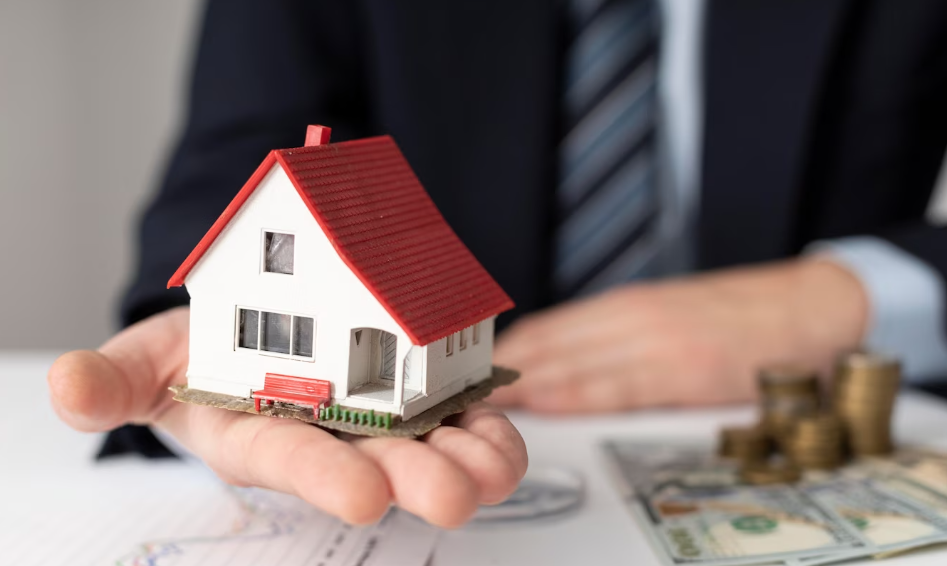It’s a common misconception in Australia that a divorce includes all aspects of separating, including the division of financial resources and assets. Divorce is the process of terminating a couple’s marital relationship.
Who gets what in a divorce, or how to split assets in divorce, is determined by a separate financial settlement.
If you’re wondering how to get assets divided in divorce, it’s important to understand that the laws concerning divorce in Australia are covered under the Family Law Act 1975, which encompasses marriage, divorce, de facto relationships, guardianship, adoption and the care of children.
How do you split assets in divorce?
There are four options couples have when splitting their assets after divorce:
- A non-legal arrangement
- A binding financial agreement
- Consent orders; or
- Litigation
1. Non-legal arrangement
Non-legal arrangements are made when a couple splits amicably and can agree on assets divided without legal documentation in their divorce settlement. However, this kind of agreement does not prevent one of the parties from going to Court later to ask for financial support orders under the Family Law Act.
These more informal agreements in divorce settlements have advantages and disadvantages.
Advantages
Informal agreements offer a high degree of flexibility. Parties can negotiate terms that suit their unique circumstances. The Court applies no strict rules.
Avoiding the legal process can save significant amounts of money in legal fees. This is particularly beneficial if the parties are on amicable terms and can agree without legal intervention.
Reaching an informal agreement in a divorce settlement can be much quicker and potentially reduce legal fees compared to going through the full legal process.
Disadvantages
The biggest drawback of an informal agreement is that it’s not legally binding. If one party fails to adhere to the agreement, the other has limited legal recourse.
Without legal guidance in a divorce settlement, there’s a risk that one party may agree to terms that are not in their best interest. This is especially true if there is a power imbalance or lack of knowledge of financial resources.
Informal agreements may not adequately address complex issues like property settlement division or debt responsibility. This can lead to future legal complications.

How to make an effective non-legal arrangement?
Step 1: Communication
Begin with an open and honest discussion about what each party wants and needs from the financial settlement. Here are some considerations.
Both parties should come to the negotiation with an understanding of what they want to achieve. Communicate these needs clearly and honestly.
Listen to the other party’s concerns. Make an effort to understand their position.
Be open to compromise. If there are issues in the negotiation, find potential alternatives that work for both partners.
Step 2: Compile Financial Documents
Collect all relevant financial documents such as bank statements, property settlement valuations, superannuation statements, and debt statements.
Step 3: Consider future needs
Think about the future needs of one or both parties. Does one party have a reduced earning capacity or limited access to financial resources? Also, think about retirement, education for children, health issues, and potential changes in living arrangements.
Step 4: Seek legal advice
Legal advice can help ensure fairness and understanding of legal rights and obligations.
Step 5: Draft the agreement
Write down the agreed terms. Include how assets divided are for property settlement, debt responsibilities, and any ongoing financial support and financial resources.
Make sure the agreement uses clear language. There shouldn’t be any room for interpretations.
If you’re including spousal maintenance payments, detail the payment amount, the schedule, and how long it will last.
Step 6: Review and revise
Ensure both parties agree with all terms. Be open to revising the agreement to address any concerns.
Consider when agreement reviews should take place. Should you revisit the agreement regularly, such as every six months? Or will reviews take place after significant life changes, like shifts in employment or living arrangements?
Redraft the agreement to reflect any changes that were agreed to.
Step 7: Sign the agreement
While the agreement is informal, the parties should sign it. This creates a sense of commitment to the terms. After signing the agreement, both parties should receive a copy of the agreement.

Who gets what?
Informal agreements can divide property settlement in any way the parties choose. This can make informal agreements risky as one party may not get their proper entitlement. Some considerations you might make include:
Agreements Made During the Marriage. The couple may have had any agreements or understandings during the marriage regarding their finances and property settlement division.
Legal and Professional Advice. Even for informal agreements, obtaining legal and financial advice and financial resources is crucial to understanding the agreement’s rights, obligations, and implications.
Future Needs. The agreement may consider the future needs of both parties. This includes factors like age, health, financial resources, care of children, and the ability to earn income.
2. Binding financial agreements (BFA)
A binding financial agreement is a legal document that can be entered into before, during or after the relationship. When entered into before marriage, they are referred to as a prenuptial agreement. Binding financial agreements are final and enforceable. They essentially exclude the Court from overruling them unless there are exceptional circumstances.
Advantages
A BFA can be entered into at any time before, during, or after a relationship.
BFAs generally offer parties greater flexibility in how assets divided.
BFAs avoid the need to involve the Court in making financial determinations.
Disadvantages
A financial agreement is often the most expensive option for dividing property.
The process of creating a financial agreement can be drawn out if negotiations stall.
Given the complexity around creating a legally enforceable agreement, there’s a risk that it may not hold up in court if challenged.
How to form a binding financial agreement?
Step 1: Communication
Both parties should openly discuss their financial situations, objectives, and concerns regarding the agreement.
Step 2: Disclose finances
Both parties must make a full and frank financial disclosure. This may include bank accounts, stock portfolios and real estate. You must also factor in debts to understand the net asset pool.
Step 3: Seek independent legal advice
Each party must seek independent legal advice. This is a legal requirement for the BFA to be binding. The lawyers will explain the party’s rights and obligations under the agreement. The party should understand the advantages and disadvantages of entering into the BFA.
Step 4: Draft the agreement
One party’s lawyer usually drafts the agreement. The document outlines terms for asset division and any spousal maintenance arrangements.
Step 5: Review the agreement
The other party and their lawyer review the draft. Negotiations may take place to reach mutually agreeable terms.
Step 6: Sign the agreement
Once both parties are satisfied, the BFA is signed. The signatures must be witnessed by the lawyers who provided the legal advice.
Step 7: Independent legal advice certificate
Each lawyer must provide a certificate confirming that independent legal advice was given.
Who gets what?
When getting independent advice, your lawyer will advise you on whether the division is reasonable. Here are some considerations:
Practicality of the Division. The division should be practical. Consider the ease of transfer of assets, the ability of each party to manage certain assets, and the desirability of achieving a clean break to avoid ongoing financial ties. This might affect who receives the family home or gets responsibility for a share portfolio.
Superannuation Interests
Superannuation is treated as property. Consider how superannuation interests should be split. Often, one party has less superannuation than the other. It may be appropriate for that party to get a share of their former partner’s super interest.Effect on Children
The impact of the property settlement division on the welfare of any children is critical. Ensuring children have a stable environment and their financial needs are met is paramount. This means that the primary caregiver should receive a more significant share.
Learn more: What Is a Binding Financial Agreement?
3. Consent orders
A financial consent order is a legal document formalising the division of assets and financial obligations after a relationship ends. It’s approved by the Court, making it legally binding and enforceable, ensuring compliance with the agreed terms. This order can cover property settlement, finances, and spousal maintenance but not child support.
Advantages
Financial consent orders are generally the most straightforward way of dividing assets.
Consent orders are usually cheaper than litigation or BFAs.
Consenting to court orders helps parties avoid the emotional toll of litigation.
Disadvantages
Once a consent order is made, they are difficult to overturn if you’re unhappy with them.
Since the Court determines the division, court orders offer less flexibility.
Failure to disclose information can lead to legal consequences.
How to apply for consent orders?
You must fill out an Application for Consent Orders. It is strongly advised to seek legal counsel before applying. Even the most amicable couples find the division of assets emotionally challenging. Having an experienced divorce lawyer will help you to understand the needs and rights of both you and your ex-spouse.
Before the Court will accept financial consent orders, it must be satisfied that the proposed property division is “just and equitable”.

How assets are divided in Family Court?
Most people assume they are entitled to a 50/50 split of assets. However, several contributing factors are considered during property settlements, including physical and financial assets and liabilities. More often than not, a 50/50 split isn’t the fairest outcome.
You may have been led to believe that anything you own in your name only is yours, and anything you own jointly with your ex-spouse will be split between you. However, this isn’t always the case.
How assets are divided in a divorce has more to do with the contributions and needs of each person than whose name is attached to what item. This ensures one person isn’t disadvantaged.
For example, if one person were the children’s primary caregiver, they would likely have less financial stability or fewer retirement savings.
A four-step process calculates a just and equitable asset split under the Family Law Act.
Valuation of assets
Assessing the contributions of both parties
Determining future needs
Evaluating the impact
Step 1: Valuation of Assets
The first step of the process is to assess the assets and liabilities you and your ex-spouse have. This includes both those you have jointly and assets and liabilities you each have on your own. This step requires each party to fully disclose individual bank balances, the value of owned investment properties or shares, outstanding loans and any interest in a business or company.
Assets and liabilities that must be considered in the pool, including investment properties, include those acquired before, during, and sometimes after the relationship.
For example, if one of you already owned a property before entering the relationship, its value and associated debt will usually be included in the asset pool.
Similarly, any assets or debts acquired after the relationship ended will also be considered.
For example, this will be relevant if one person accumulates a large debt or spends a large sum of the couple’s money after the relationship ends.
It’s essential to undergo this process with an experienced lawyer to ensure all assets and liabilities are accounted for, including any hidden assets or instances of one party hiding assets.
There may be some that you or your ex-partner have not considered, such as superannuation or a debt one of you owes to a friend. Sometimes, a partner may even attempt to hide assets from the process for an unfair advantage. You can prevent this by using a forensic accountant to examine the finances.
You may also feel entitled to 100% rights over an asset you acquired before the relationship. This may be the case, particularly if your ex-spouse made no contributions to the asset. However, all assets and liabilities must be thrown into the asset pool together at this first stage.
A fair and thorough assessment of all assets is essential, particularly when one party may uncover hidden assets.
Step 2: Assessing the non-financial and financial contributions of both parties
This step is about understanding what each of you brought to the relationship. While the income of each party is included, not all contributions to a relationship are financial.
Direct financial contributions can include wages, government allowances, inheritance, dividends from shares or any other financial income you receive.
The most apparent non-financial contributions that need to be considered are being a caregiver of children and a homemaker, along with direct financial contributions such as renovating a property or even indirect contributions from family members.
These can include providing childcare, a deposit to purchase a property, or being a guarantor on a home loan.
In family law, each of these contributions is assessed as a percentage or a range of percentages and compared against the asset pool to determine the first split of assets between the parties.

Step 3: Determining Future Needs
Now that all the assets, liabilities, and contributions to the relationship have been assessed under family law, your current and future needs must also be considered.
Several things need to be considered here for each person. These include their age, health, future earning capacity, employment prospects, and financial resources. Also, the Court will consider who will be responsible for looking after the children of the relationship, individual living requirements, and the impact the relationship may have had on each person’s earning capacity.
Access to support from family members, such as for childcare, living arrangements, or financial support, may also be considered by the family court when dividing the asset pool.

Step 4: Evaluating the Impact
The final step in the process is for the Court to consider whether their split of the assets and debts is just and equitable to you and your ex-partner.
Some men believe they will be worse off in a financial settlement even if they have been the primary income earner in the relationship. This is usually untrue, as men are more likely to rebound quicker financially post-divorce than women.
This is often because women are the primary caregivers of children. Single older women are often most disadvantaged regarding their financial circumstances, particularly to their earning potential.
The Court may determine one person is given a higher portion of the assets if they have significantly less earning capacity.
This may seem complicated, so it’s important to seek the advice of an experienced property and family lawyer. They can simplify the process and ensure you receive what you’re entitled to.

What to consider when dividing assets?
Remember that not only are assets split in a financial settlement, but debts are also. So, if one partner is given a more significant portion of the asset pool, they may also be given more debt obligations.
Counting assets and liabilities and considering contributions and future needs sounds straightforward. However, for most couples, this is a difficult process. It can be even more challenging for amicable couples who want to do right by one another and are unsure how to proceed without rocking the boat.
A common challenge couples face is when they get fixated on a percentage they believe they deserve. While assets are rarely divided 50/50, there is no set percentage set down in Australia’s Family Law Act.
The split will be different for each couple. It’s better to focus on the goals and needs of each person to reach the fairest and most equitable settlement. Use percentage as a sense check rather than the end goal.

Litigation
Litigation is where the Family Court determines how the couple’s assets and liabilities will be split. This is the most lengthy and costly process. It usually requires attendance in Court.
This is generally a last resort option due to its emotional and financial impact on families.
Advantages
Litigation helps parties overcome in impasse in property disputes.
Court orders can be more easily enforced than BFAs or informal agreements.
Parties concerned about unfair divisions are protected by the Court’s impartiality.
Disadvantages
Disputed orders can lead a long and costly court process.
Litigation can have a significant emotional impact on the parties.
Litigated cases can strain co-parenting relationships and impact children.
Dispute resolution
Before pursuing litigation, the Court requires parties to try alternative dispute resolution first. In these pre-action procedures, parties must make a genuine effort to compromise on their position. If the mediation is successful, the agreement can be formalised with consent orders. If they can’t agree, they will receive a genuine steps certificate to show they have satisfied the pre-action requirements.
A party isn’t required to pursue dispute resolution if it’s unsafe to do so. For example, you can forego pre-action procedures if there’s a risk of domestic or family law act in violence.
Final hearing
One major difference between consent orders and financial orders is the need to attend a court hearing. Attendance doesn’t necessarily need to be in person. Parties can ‘appear’ in court over the phone or via video conferencing software.
At the hearing, the litigants can submit evidence through affidavits from themselves and their witnesses. They will have the opportunity to cross-examine witnesses and deliver a final address summarising their case.
It’s crucial that you have gathered as much evidence relevant to your case as possible. Keep financial records as meticulously as you can. Some of the documentation that might be relevant includes:
Court documents and the dates you received them.
The date of the purchase or sale of the property.
Copies of receipts, bank statements, insurance policies and other property-related documentation.
Copies of correspondence.
Photos, emails, video footage, etc.
Cross-examination
Effective cross-examination can bolster one party’s case and damage the other litigant’s case. A good cross-examination will attempt to show weaknesses in the other person’s position and highlight inconsistencies in their evidence. Preparing for a cross-examination can include:
Prepare questions that show contradictions or weaknesses in the other litigant’s evidence.
List the primary points you want to make.
Any evidence that proves part of the other party’s case wrong must be put to them.
Don’t ask abusive or offensive questions.
Once a party has completed a cross-examination, the other litigant may re-examine their witness to clarify any points that arose. The witness may not introduce new evidence at this point.
Time limit
There is a time limit on when parties can seek court orders. For married couples, an application can be made at any time during the mandatory separation period. After a divorce, they have one year to begin proceedings. For a de facto couple, an application must be made within two years from the date of separation. Applications after these deadlines may still be accepted in special circumstances.
What am I entitled to in a Divorce Settlement?
When getting divorced, you will want to know how much you are entitled to. There is no set percentage under Australian law when dividing assets. Determining how you should split your assets and liabilities can be challenging.
It will be different in each circumstance. While a 50/50 split is rare, you are more likely to end up with a 60/40 or even 70/30 divorce settlement.
The most common percentage split in the division of assets in Australia is 60/40. For many couples, one partner will contribute more financially, while the other may contribute more in caring for children and looking after the home.
In these situations, it is common for the financial contributor (often a male) to end up with 40% of the assets. The partner who contributed mainly non-financially (usually female) will get 60%. While this may seem unfair at face value, the Court makes adjustments based on the future needs of the individuals.
The male likely has more earning capacity and income and is therefore deemed able to recover from the divorce more quickly than their ex-spouse. The partner (usually female) who contributed mainly non-financially to the relationship would be given 60% of the assets if they are likely to be the children’s primary caregiver post-divorce and their earning capacity is lower than their ex-spouse.
In this case, they would be awarded a higher percentage to address their future financial needs.
A 70/30 split in the division of assets is rarer. However, it can still be done. This usually occurs when the asset pool is large (over $10 million), and one partner contributed most of it.
You may also see a 70/30 split when one partner is in a hurry to finalise the settlement and may want to settle for less than they are entitled to. This is when it is essential to seek advice from an experienced divorce lawyer. They can negotiate for you and ensure you walk away promptly with what you’re entitled to.
Although financial settlement can be stressful, you must consider your current and future needs. Opportunities to reopen a financial settlement case are limited, and this may not always be an option available to you.

The male likely has more earning capacity and income and is therefore deemed able to recover from the divorce more quickly than their ex-spouse. The partner (usually female) who contributed mainly non-financially to the relationship would be given 60% of the assets if they are likely to be the children’s primary caregiver post-divorce and their earning capacity is lower than their ex-spouse.
In this case, they would be awarded a higher percentage to address their future financial needs.
A 70/30 split in the division of assets is rarer. However, it can still be done. This usually occurs when the asset pool is large (over $10 million), and one partner contributed most of it.
You may also see a 70/30 split when one partner is in a hurry to finalise the settlement and may want to settle for less than they are entitled to. This is when it is essential to seek advice from an experienced divorce lawyer. They can negotiate for you and ensure you walk away promptly with what you’re entitled to.
Although financial settlement can be stressful, you must consider your current and future needs. Opportunities to reopen a financial settlement case are limited, and this may not always be an option available to you.

It should be noted that the longer a relationship lasts, the less critical contributions are valued by the Court. It’s understood in most cases that over a long period, the contributions to the relationship would be more or less equal (whether financial or not).
This means that, in some cases, a 50/50 split is the most appropriate. An example could be a couple who have been together for a long time and are both retired. Or perhaps a couple where one partner was the sole financial contributor, but the other was the sole caregiver for children.
In short-term relationships, where assets in the asset pool were acquired only jointly, there are no children, and the couple earns similar incomes, a 50/50 split may also be the fairest division.
Are assets split 50/50 in divorce in Australia?
Most people think a 50/50 split of the asset pool is the fairest outcome when they separate. However, this isn’t always the case.
Couples rarely settle on a 50/50 split. Under the Family Law Act 1975, there is no set percentage split, and every case will differ. That said, the most common division is a 60/40 split.
This usually occurs when one partner earns more while the other has more responsibility in looking after children post-divorce, has limited financial earning capacity, or has less superannuation.
Each party’s future needs and ability to support themselves are the main factors that sway the percentage split once all the assets and liabilities have been assessed.
Do you need help with a divorce matter? We can assist you.
Which assets are considered in a divorce?
It might surprise some couples what assets and liabilities are considered in a divorce. You often need to consider assets brought into the relationship, acquired both separately and jointly during the duration of the relationship, and even assets and liabilities gained after the relationship ended.
There are no set rules under Australian Law, and what is and isn’t considered can be decided on by the couple, the courts, or a combination of both.
Usually considered in the asset pool are:
Properties owned both individually and jointly
The respective income of each party
The superannuation of each party
Debts owing both jointly and individually
How long does a divorce settlement take?
The better you and your ex-spouse understand each other’s needs, the easier and quicker an agreement can be reached. If you agree on the division of assets, the settlement can take as little as two weeks to be finalised.
If there are disputes, the process can take a matter of months when settled outside of Court. If it needs to go to court, a case may take up to three years to resolve.
How can I protect my assets from divorce?
There are several ways you can protect your assets. One of the four options couples have when splitting their assets is a binding financial agreement, which can be entered at any time before, during or after your marriage.
When entered into before you get married, this is referred to as a prenuptial agreement. While some people think a ‘prenup is only used when the marriage is expected to fail, you can compare it to health insurance.
Most people don’t expect to fall ill. However, they still have health insurance. A binding financial agreement is a legal document outlining how assets and liabilities would be divided in divorce. It is final, meaning it can only be overruled by the Court in exceptional circumstances.
Prenuptial agreements can be particularly useful because they allow you to include clauses that protect things with future financial benefit. Those with significant estates will often wish to prevent any changes to the asset pool, both positive and negative, from being considered in a settlement.
For example, you may purchase a property or receive an inheritance post-separation, which you do not want to be considered in the asset pool. With the help of a divorce lawyer, you may organise a financial agreement that accounts for such eventualities.
Can I get divorced without a financial settlement?
It’s a common misconception that divorce includes a financial settlement. Under Australian law, divorce and financial settlements are handled separately.
You can file for a divorce without a financial settlement. However, you may find you are entitled to more than you think. It’s also advisable not to wait until you have divorced to start dividing assets.
The reason for this is that post-separation, your asset pool may have changed. You may also have acquired more assets or received an inheritance, which may be divided between you and your ex-partner. Likewise, one of you may accumulate debt post-separation, which can negatively impact significantly.

If your divorce is finalised before your financial settlement, you will have 12 months from the date of your divorce to commence a property settlement application or have your agreement completed. If you wish to apply outside of this timeframe, you will need to seek permission from the Court to do so.
Compared to a financial settlement, filing for divorce is a straightforward process. As financial settlements are more complex, each party should seek independent legal advice to ensure you get what you are entitled to.
The division of assets may seem daunting. If you have an amicable relationship with your ex-spouse, you may want to opt for an informal agreement to prevent conflict or speed up the process to limit contact. However, it’s wise to seek legal advice to ensure the agreement is fair and binding.
Can I get divorced before the property settlement?
Under Australian law, divorce and the division of assets are separate processes. You can finalise a divorce before reaching a financial or property settlement agreement. Conversely, you can get a property settlement before finalising your divorce.
Filing for a divorce is the process of two people separating from marriage and is done by completing divorce application forms and submitting them to the Commonwealth Courts Portal.
Read our blog here for detailed instructions on who can apply for a divorce and how to apply.
If you’re unsure if you can apply for a divorce or how to proceed, our experienced divorce lawyers can assist you.
Can a divorce settlement be reopened?
If you have reached a financial agreement but are unhappy with the outcome once it has been finalised, you can apply for a property adjustment. After divorce, your application for the adjustment must be made within 12 months of your divorce being completed.
If you do not apply within this time limit, you must obtain special permission from the Court.

Divorce Property Settlement Example
It’s human nature to seek out similar situations to understand what we should do and imagine what outcome we might expect. The Australian Government has supplied this case study in the Property and Financial Agreement and Consent Orders Guide issued by the Attorney-General’s Department.
Case Study
Drago and Constance are separating after being together for 15 years and married for eight years. As they approach their divorce property settlement, Drago, who works full-time, earns $87,000 a year, while Constance works part-time and makes $68,000 a year.
They have two children, aged 6 and 4. Using the negotiation guide, they arrived at the following negotiated property settlement proceedings and will seek a property consent order from the Court, supported by the necessary legal documentation:
Joint Assets and liabilities
A family home valued at $670,000 with a $250,000 mortgage. Net value: $420,000.
Family car #1 Subaru Forester valued at $24,000 with a $12,000 loan. Net value: $12,000.
Family car #2 Holden Commodore. Net value: $8,000.
Furniture. Net value: $25,000.
Joint savings account. Net value: $15,000.
Westfarmers shares. Net value: $10,000.
Joint transaction account. $1,200, with a $500 overdraft. Net value: $700.
Joint credit card. $8,000 in debt.
Individual Assets and liabilities
Drago Superannuation. Net value: $300,000.
Constance Superannuation. Net value: $120,000.
Drago savings account. Net value: $20,000.
Drago boat. Net value: $5,000.
Identifying their contributions
Both Drago and Constance have worked throughout their relationship. Since having children, Constance has worked part-time to care for the children two days a week. She also takes the children to and from daycare and school.
While Drago and Constance try to share caring responsibilities for the children after work, Drago travels to work often. Therefore, Constance is often solely responsible for caring for the children.
They also both acknowledge that Constance’s ability to earn superannuation was limited by extended maternity leave and the fact that she has been working part-time.
Based on Constance having the majority of childcare responsibilities, she and Drago have agreed that the property settlements should be split with an adjustment in Constance’s favour.
Considering the section 75(2) factors
Section 75(2) of the Family Law Act guides how the Family Court considers the division of property and spousal maintenance in a divorce. This section lists factors the Court must consider when determining what is just and equitable in property settlement and maintenance matters.
Drago and Constance are both in their late 30s and are likely to be able to work until retirement. They agree that the children should live at each of their houses and acknowledge that Constance will likely have significantly more caring responsibilities than Drago.
This will impact Constance’s ongoing ability to work full-time. They agree that the property split should be readjusted to reflect Constance’s lost potential earnings.
Conclusion
Property settlements can be tricky. They’re often more complex than people realise. The various options available each have pros and cons. Which one is right for you will depend on your situation.
If you are going through a divorce and struggling on how to split all the assets, seek expert guidance. An experienced lawyer will protect your rights and ensure you receive a fair settlement. Andrews Family Lawyers can provide you with professional advice that is tailored to your specific needs.
A word from one of our valued clients:
Thank you, Peter from Andrews Family Lawyers, it was a pleasure dealing with you. A no complication to the point settlement. Your open and honest demeanor helped my ex-partner and I to expediently resolve our financial situation so we can move forward with our lives.
– Chris
If you need assistance with family law matters, Andrews Family Lawyers can help.
If you need assistance with family law matters, Andrews Family Lawyers can help.






